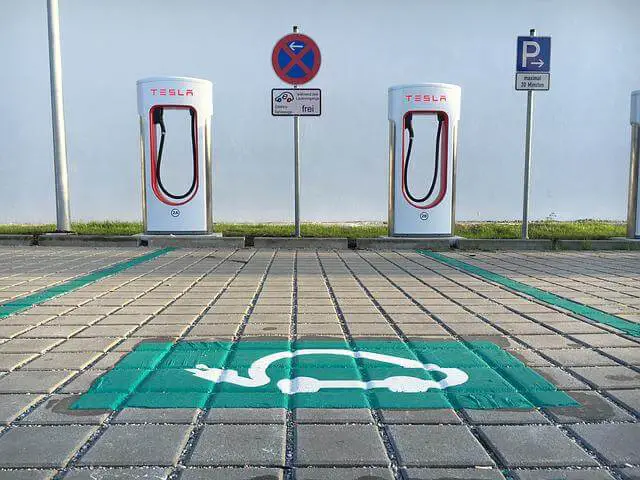Last Updated on November 27, 2023 by Rose Morah
If you are wondering why your Tesla is charging slowly at the Supercharger, this article highlights some of the main reasons, based on our experiences and other Tesla owners.
We will help you figure out whether it is something that you can easily fix by yourself or take it to the Tesla Service Center.
But before we get started, I should point out that there are many factors that determine your Tesla charging rate when supercharging.
| NOTE: If you are a new Tesla owner, I would recommend that you go through our article on how to maximize range and reduce the battery drain on your Tesla. |
See also: Tesla Supercharging Tips To Speed Up Your Charging Time On A Road Trip.
Reasons why your Tesla is charging slowly at a supercharger
From experience, the following are some of the main things that you need to pay close attention to if you are experiencing slow charging speeds at a Supercharger:
1. The problem could be the supercharger
Sometimes the problem could be the supercharger and not your Tesla.
But, how do you know if the supercharger is the problem?
- Personally, whenever I plug in my Tesla to charge at a supercharger and get low charging rates, I usually move to another supercharger, and most of the time the charging speed ends up improving significantly.
Therefore, I recommend moving to a different Supercharger to see if the charging rate will improve.
However, if you find the charger unplugged, this could be a signal that it is not working. -A Tesla charger etiquette.
- Go through the reviews on the Plugshare app or other trip planner apps to check whether there are any complaints from other Tesla owners concerning the supercharger.
This will help you figure out if indeed the supercharger is the problem.
It also saves you time because you won’t have to stop at that supercharger.
I remember, on one of our previous road trips, I stopped at Kingman, AZ, for a charge but the charging rate was super slow. It never went above 50kw, and I was not even sharing.
However, after checking the supercharger reviews on my route planner, I realized that most people had already reported low charging speeds.
See also:
4 Best Tesla Model 3 Tires (According to Model 3 Owners).
Cool and Must-Have Tesla Model 3 and Y Accessories.
2. It could be a car-related issue
As I mentioned earlier, there are so many factors that determine the charging rate of your Tesla when Supercharging.
Therefore, the following factors could affect the charging speeds of your Tesla:
A. Your Tesla is close to a full charge
One thing to note is that if your Tesla is close to a full charge, it will not charge at a high rate.
But when the battery level is low, Tesla will charge at a high rate and will slow down when it’s almost full.
Why does the Supercharger slow down?
This is because the car ‘communicates’ with the supercharger. Therefore, it will only request what it needs and only what it can handle.
To test it yourself, I’d recommend stopping at a supercharger with a low charge (say 10%) and compare the charging rate with when the charge is over 65% and 80%.
You will definitely notice a change in charging speeds.
For instance, our Tesla Model 3 gets about 20kW when it reaches over 85% of the charge.
| Key Take Away The charge rate is high when the battery is close to empty. The charge rate slows down when the battery is almost full. |
See also: 10 Smart Long-distance Tesla Road Trip Tips.
B. The Tesla Model/Version
Well, if you have the base model (RWD versions) of Tesla Model 3 and Y, then they will not be able to reach the maximum charging speed of 250kW.
They can only support up to 170kW. This could be the reason why your Tesla is charging slowly.
3. Failure to precondition the battery or not preconditioning long enough
First of all, if you do not precondition the battery before arriving at the charging stop, then this will affect the charging speed at the Supercharger.
Heating the battery before arriving at a Supercharger helps reduce the average charge times by 25%, according to Tesla.
Secondly, you may need to precondition it longer.
From experience, we found that in some cases, you may need to precondition your Tesla longer (30 min to 40 min) depending on the temperature or how cold it really is outside.
Thirdly, LFP batteries tend to charge fast whenever they are toasty warm.
| What is Tesla battery preconditioning? In simple terms, preconditioning the battery is a way of ‘telling’ the car that you are heading to a supercharger so that it can warm the battery before arriving at the charger. |
You may also like: How To Determine The Cost Of A Tesla Road Trip.
4. The type of Supercharger
It’s important to note that not all Tesla Superchargers have the same specs. This means that if it’s charging slowly, this might be due to the type of Supercharger you are using.
They include V1, V2 and V3
- V3 Supercharging – It provides faster charging and no power-sharing (splitting power).
- V1 and V2 – Provides slower charging speeds compared to the V3.
Additionally, you may be charging at a power-sharing supercharger. This means that if there’s someone charging next to you, this may limit your charging speed.
| Take Away Find out what power the Supercharging stations have and you will see the difference in charging speeds. |
5. Temperature
Excessively hot or cold temperatures affect the charging rates of EV batteries.
For instance, in the winter and hot summer seasons, the battery charge rate will be a bit slower.
6. There could be other issues with your Tesla
If none of the things mentioned here apply to your Tesla, then I recommend contacting Tesla to help solve the issue.
All the best!




